Consider three blocks placed one over the other as shown in Fig. Let as now pull the blocks with the force of magnitudes 18N,100N and 15N Take m1=m2=m3=10kg If the coefficient of static and kinetic friction between all contacting surface are μg=0.2 respectively find the
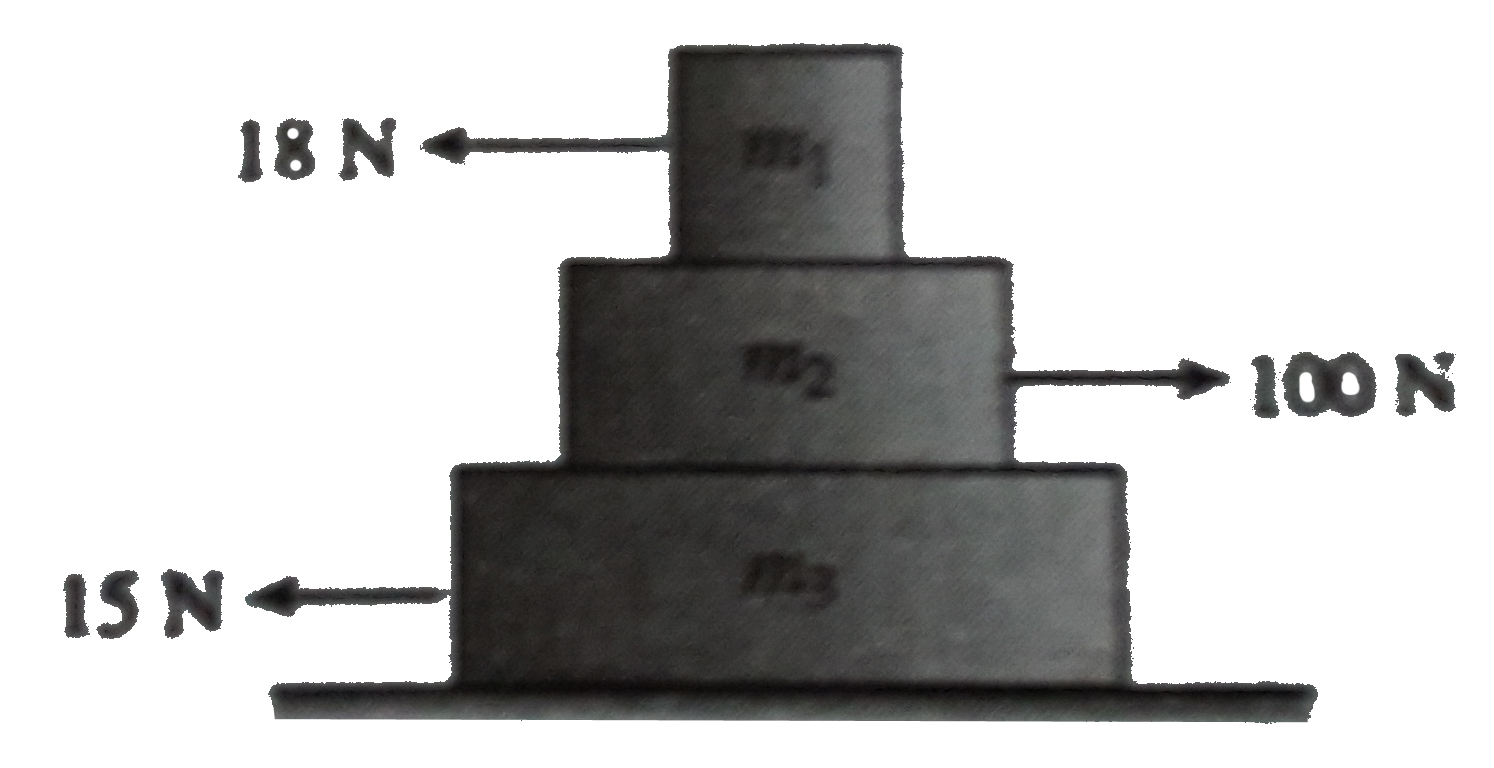
(a) Acceleration of the block s
(b) Friction at each surface
Let us first calculate the limiting and kinetic friction force between various contact surface:
Between m1 and m2 :
ft1=0.3×10g=30N
fk1=0.2×10g=20N
Between m2 and m3 :
fl2=0.3×20g=60N
fk2=0.2×20g=40N
Between m3 ground :
fl3=0.3×30g=90N
fk3=0.2×30g=60N
Consider FBD of m3

Maximum value of f2 is ft2=60N which is less then the maximum value of 15+f3 which 15+90=105N Hence, m3 will not acceleration so a3=0
Now assume that m1 and m2 move together with common acceleration a
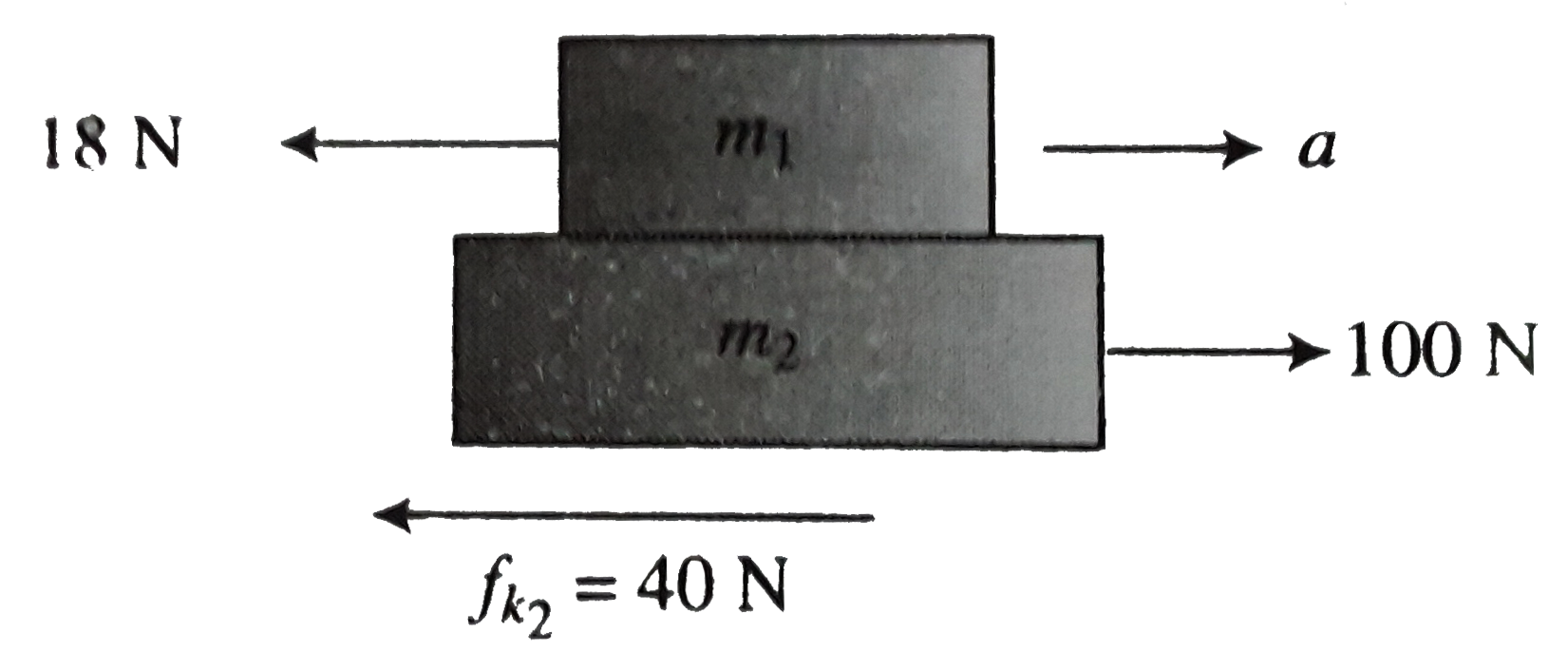
a=100−18−4020=2.1ms−2
Let us calculate how much friction is required between m1 and m2 for common acceleration a for this , consider FBD of m1
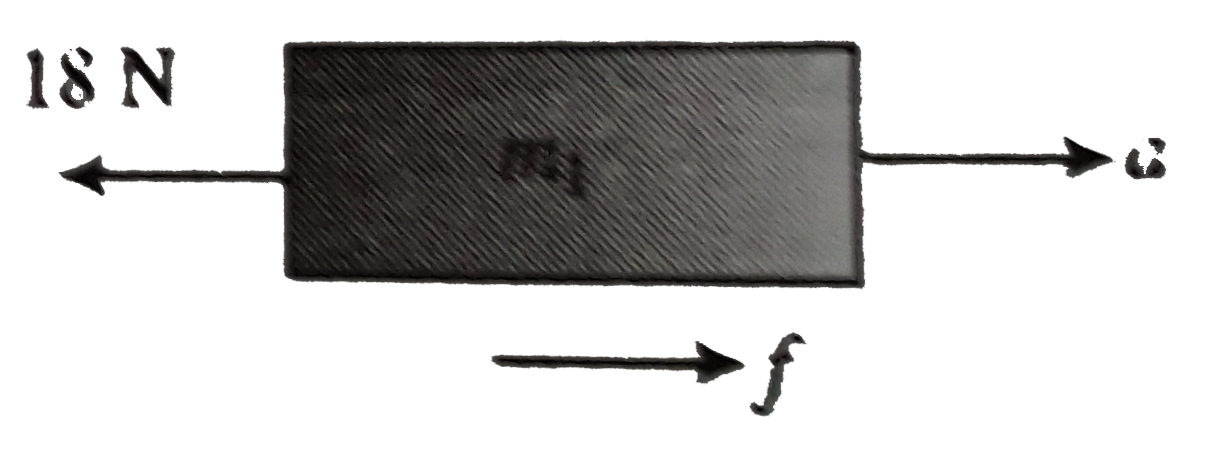
f1−18=10a⇒f1−18=10×2.1⇒f1=39N
This is not possible because the maximum value of fl1=30N. Hence, slipping occurs between m1 and m_(2)
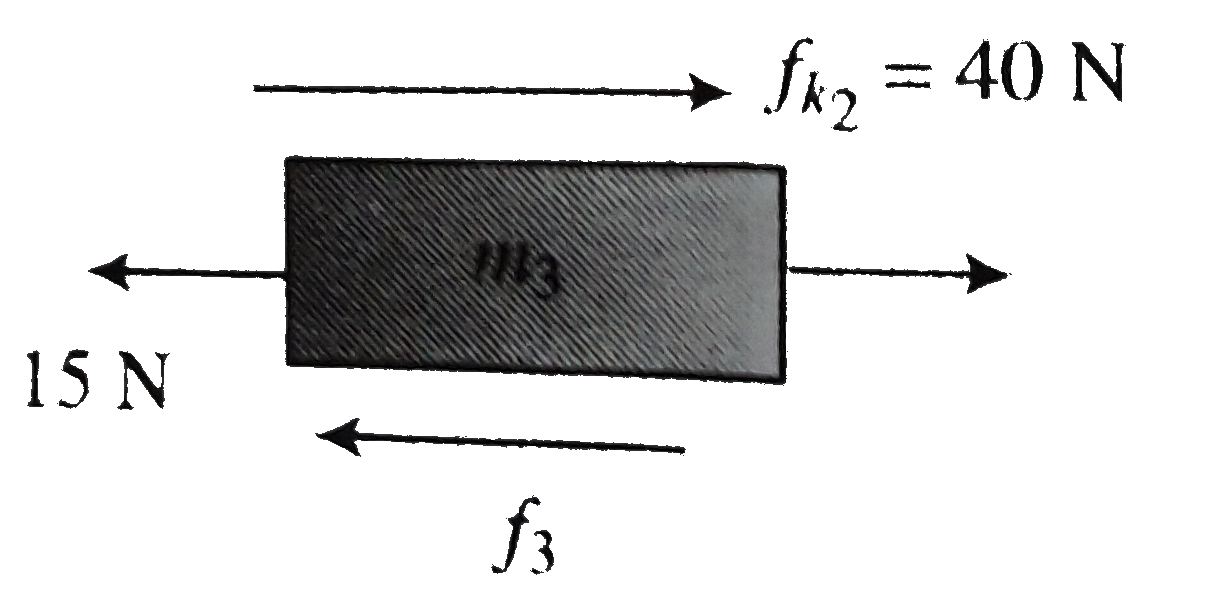
a1=fk1−1810=20−1810=0.2ms−2
a2=100−fk1−fk210100−20−4010=4ms−2
a. So acceleration of m1 is a1=0.2ms−2
Acceleration of m2 is a2=4ms−2
Acceleration of m3 is a3=0
Since slipping occure between m1and m2 Friction between m1and m2 is fk1=20N Similarly . Slipping accures between m1and m2 and m2 is fk2=40N

To find friction between m3 and ground :
fk2=15+f3⇒40=15+f3⇒f3=25N
Topper's Solved these Questions
- NEWTON'S LAWS OF MOTION 2Book:CENGAGE PHYSICS ENGLISHChapter:NEWTON'S LAWS OF MOTION 2Exercise:Exercise 7.1
Explore 25 Videos
- NEWTON'S LAWS OF MOTION 2Book:CENGAGE PHYSICS ENGLISHChapter:NEWTON'S LAWS OF MOTION 2Exercise:Exercise 7.2
Explore 16 Videos
- NEWTON'S LAWS OF MOTION 2Book:CENGAGE PHYSICS ENGLISHChapter:NEWTON'S LAWS OF MOTION 2Exercise:Integer type
Explore 1 Video
- NEWTON'S LAWS OF MOTION 1Book:CENGAGE PHYSICS ENGLISHChapter:NEWTON'S LAWS OF MOTION 1Exercise:Integer
Explore 5 Videos
- PROPERTIES OF SOLIDS AND FLUIDSBook:CENGAGE PHYSICS ENGLISHChapter:PROPERTIES OF SOLIDS AND FLUIDSExercise:INTEGER_TYPE
Explore 2 Videos
Similar Questions
Block B rests on a smooth surface .The coefficient of static friction between A and B is μ=0.4 where F=30N then
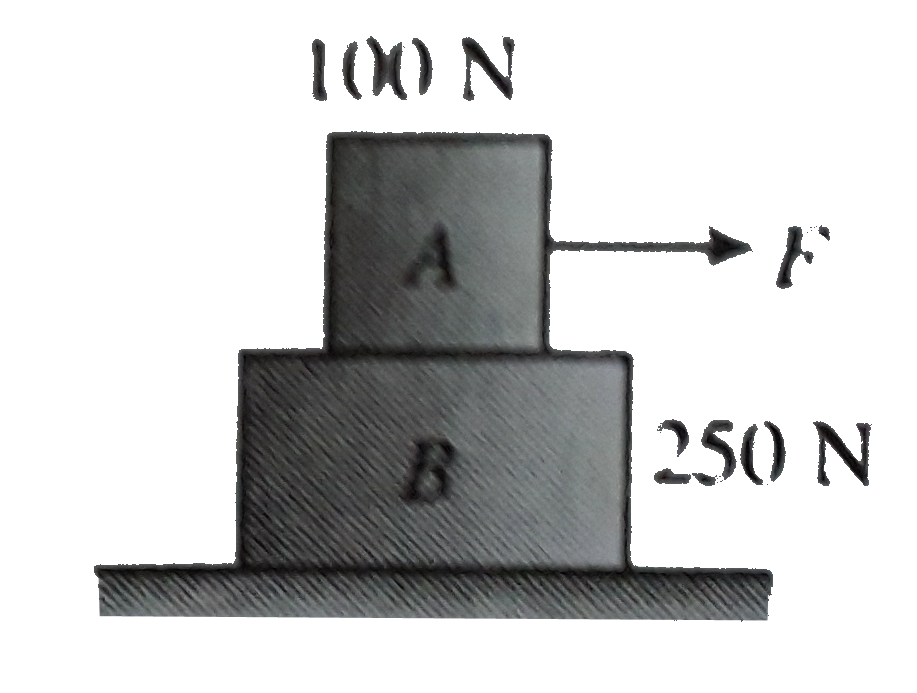
Acceleration of upper block is
View Solution
A force F=2t is spplied at t=0 sec to the block of mass m placed on a rough horizontal surface. The coefficient of static and kinetic friction between the block and surface are μS and μk respectively. Which of the following graphs best represents the acceleration vs time of the block(μS>μk)?
View Solution
Knowledge Check
A block of mass 1 kg lies on a horizontal surface in a truck. The coefficient of static friction between the block and the surface is 0.6. If the acceleration of the truck is 5m/s2, the frictional force acting on the block is…………newtons.
A10NB5NC2.5ND20N

A force F=2t is spplied at t=0 sec to the block of mass m placed on a rough horizontal surface. The coefficient of static and kinetic friction between the block and surface are μS and μk rspectively. Which of the following graphs best represents the acceleration vs time of the block(μS>μk)?
View SolutionBlock B rests on surface . If the coefficient of static friction between A and B is μ=0.4. Determine the acceleration of each , if
(a) F=30N and
(b) F=250N(g=10m/s2)
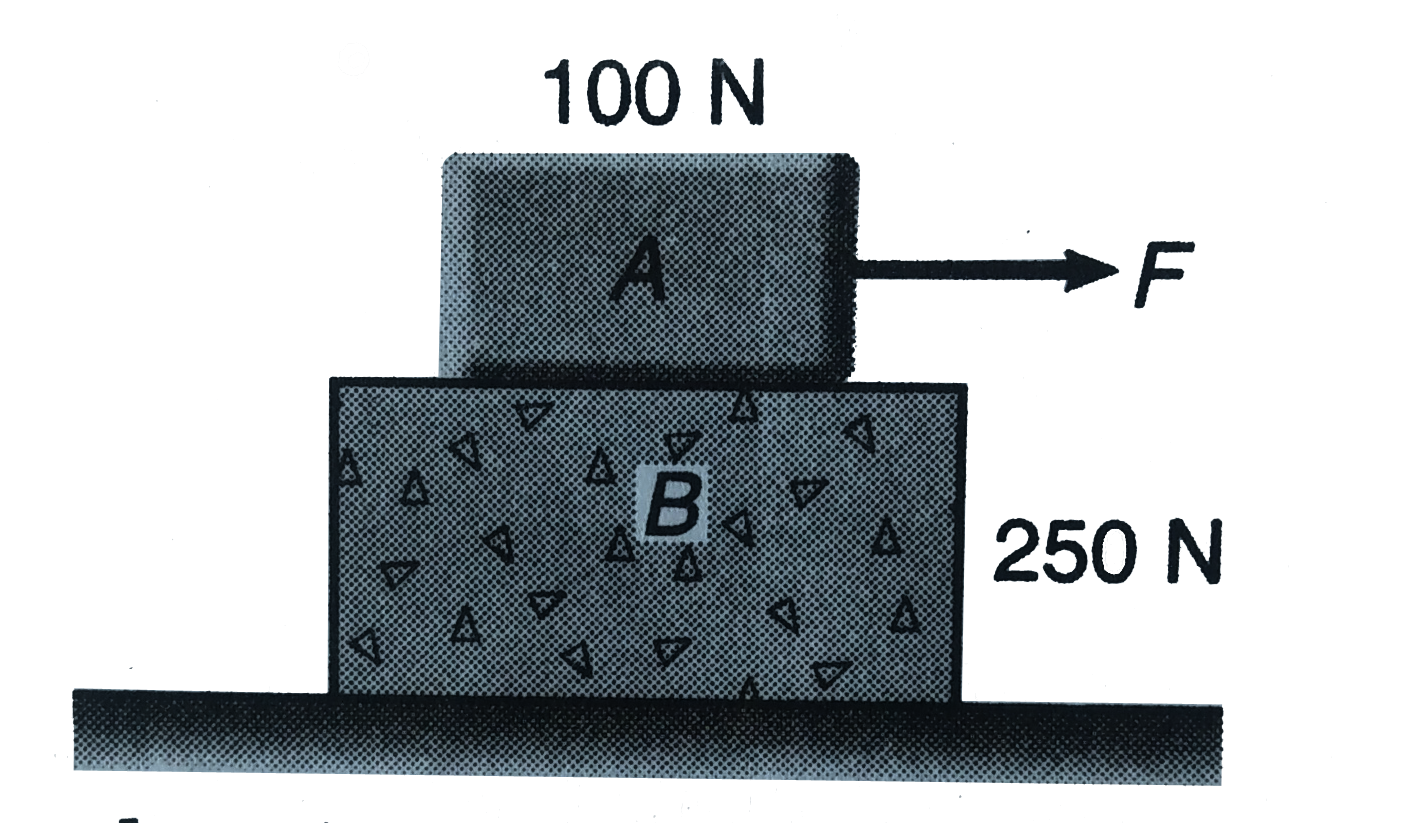
View SolutionA block mass m=2kg is accelerating by a force F=20N applied on a smooth light pully as shown in fig 7.86 If the coefficient of kinetic friction between the block and the surface is μ=0.3 find its acceleration
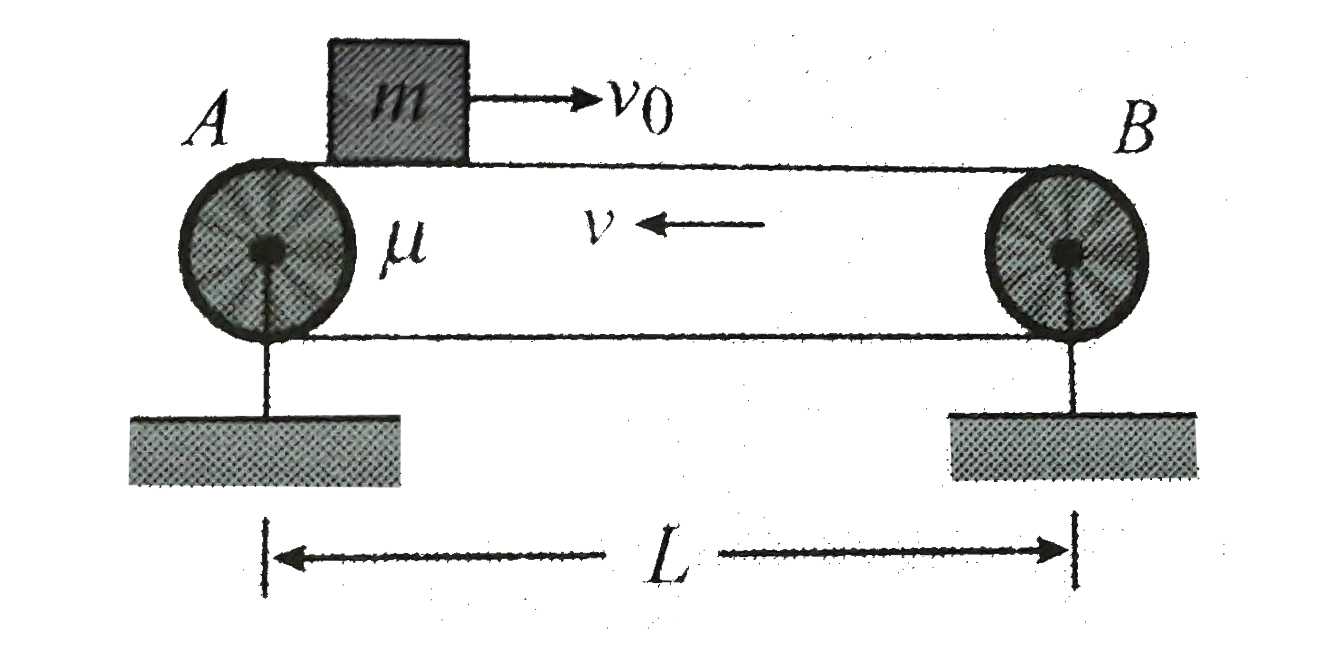
View SolutionA block of mass m is moving on a rough horizontal surface. μ is the coefficient of kinetic friction between the block and the surface. What is the net force exerted by the surface on the block?
View SolutionDetermine the acceleration of the 5kg block A . Neglect the mass of the pulley and cords . The block B has a mass of 10kg, The coefficient of kinetic friction between block B and the surface is μk=0.1 (take g=10m/s2)

View SolutionA block of mass 1 kg lies on a horizontal surface in a truck. The coefficient of static friction between the block and the surface is 0.6. If the acceleration of the truck is 5m/s2, the frictional force acting on the block is…………newtons.
View SolutionA block of mass 20kg is pushed with a horizontal force of 90N. If the coefficient of static & kinetic friction are 0.4 & 0.3, the frictional force acting on the block is: (g=10ms−2)
View Solution

